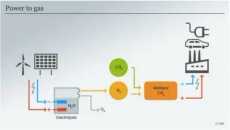Utility Vegetation Management Expected to Reach USD 49.62 Billion by 2032, Growing at a 7.4% CAGR
The Utility Vegetation Management Market is projected to experience robust growth, with its size anticipated to grow from USD 26.10 billion in 2023 to USD 49.62 billion by 2032. This growth trajectory is driven by a compound annual growth rate (CAGR) of 7.4% during the forecast period from 2024 to 2032. The increasing focus on the reliability of electricity supply, the need for preventive measures to avoid power outages, and stricter regulatory compliance are some of the factors pushing the demand for Utility Vegetation Management (UVM) services.
Utility Vegetation Management plays a critical role in maintaining power line infrastructure by preventing tree limbs and other vegetation from interfering with transmission and distribution lines. It involves various proactive and reactive services aimed at ensuring a consistent and safe supply of electricity, which is particularly important in light of the growing frequency of climate-related disruptions.
Key Drivers
Several factors are contributing to the growth of the Utility Vegetation Management :
- Increasing Incidents of Power Outages: One of the primary factors driving demand for UVM services is the rise in power outages caused by vegetation encroachment. Weather-related events such as storms, floods, and wildfires have exacerbated the risk of vegetation interfering with power lines, which can lead to widespread power failures. Utility companies are investing heavily in vegetation management to ensure uninterrupted power supply and mitigate these risks.
- Regulatory Compliance and Safety Standards: Governments and regulatory bodies are implementing stricter regulations regarding utility line clearance, safety, and environmental compliance. Many utilities are required to develop comprehensive vegetation management plans that include regular monitoring and maintenance. These policies are fostering the expansion of UVM services to avoid potential fines and liabilities.
- Aging Infrastructure and Rising Maintenance Needs: As electrical infrastructure ages, maintenance needs are growing more complex and frequent. Vegetation management is a vital component of this maintenance effort, especially in older systems where clearance distances between power lines and trees may be smaller. Ensuring the safety of aging systems through proactive vegetation management is driving growth.
- Increased Focus on Sustainability and Environmental Conservation: Utility companies are incorporating sustainable practices into their vegetation management programs. Rather than relying solely on traditional methods like tree cutting and herbicide application, many utilities are using environmentally friendly technologies, such as plant growth regulators (PGRs) and integrated pest management (IPM), to balance grid reliability with ecosystem preservation.
Segmentation
The Utility Vegetation Management is segmented based on service, technology, and region.
By Service:
- Treatment: This includes reactive measures like clearing vegetation after a power outage or safety hazard has been identified. While this segment is necessary, it typically accounts for a smaller portion of the due to the increasing focus on preventive measures.
- Pre-Planning and Monitoring: The demand for pre-planning and monitoring services is rising as utilities prioritize proactive vegetation management. This includes conducting assessments, setting clearance standards, and monitoring vegetation growth patterns to prevent potential risks before they materialize. This segment is expected to see significant growth during the forecast period.
- Reactive Repair: When emergencies or power outages occur, reactive repair services are critical for quickly restoring service. These services often involve urgent vegetation clearance and maintenance and are vital for minimizing the duration of power disruptions.
By Technology:
- Insecticides & Herbicides: These traditional methods remain widely used in the management of vegetation near power lines. Herbicides are applied to control plant growth in transmission corridors, ensuring safety and preventing encroachment.
- Plant Growth Regulators (PGRs): PGRs are increasingly being used as an alternative to conventional herbicides. By limiting the growth of plants and trees, these chemicals allow utilities to manage vegetation in a more environmentally friendly way while maintaining safety clearances.
- LiDAR (Light Detection and Ranging): LiDAR technology is revolutionizing utility vegetation management by providing detailed three-dimensional maps of vegetation near power lines. This technology allows for more precise identification of areas that require maintenance and enables utilities to prioritize vegetation control efforts efficiently.
- Others: This segment includes additional emerging technologies such as drones for remote monitoring, satellite imagery, and integrated pest management (IPM) systems. The use of advanced technologies is expected to grow as utilities seek innovative ways to enhance vegetation management processes.
Regional Outlook
The Utility Vegetation Management is witnessing diverse growth trends across different regions.
- North America: North America is expected to hold the largest share of the UVM during the forecast period, driven by significant investments in grid modernization, regulatory requirements for vegetation management, and the region's high vulnerability to weather-related power disruptions. The U.S., in particular, is seeing increased spending on proactive vegetation management to prevent wildfires and enhance grid reliability.
- Europe: Europe is anticipated to experience significant growth in UVM services, primarily due to stringent regulatory requirements around grid safety and environmental conservation. Many European countries are adopting advanced technologies like LiDAR and drones to improve monitoring and compliance with these regulations.
- Asia-Pacific: The Asia-Pacific region is poised for rapid growth in the Utility Vegetation Management due to ongoing infrastructure development and expanding electricity networks. Countries such as China, India, and Australia are investing heavily in UVM services to prevent outages in rapidly growing urban and industrial areas.
- Rest of the World: Latin America, the Middle East, and Africa are also seeing increased adoption of UVM services as utilities in these regions seek to enhance the reliability and resilience of their power grids. Rising energy demands and expanding power transmission networks are expected to contribute to growth in these regions.
Industry Trends and Opportunities
Several key trends are shaping the future of the Utility Vegetation Management :
- Use of Artificial Intelligence and Machine Learning: Utilities are beginning to adopt AI and machine learning algorithms to analyze vegetation growth data and predict potential risks. These technologies enable more precise, data-driven decision-making, improving the efficiency of vegetation management programs.
- Integration of Drones and Remote Sensing Technologies: The use of drones and other remote sensing technologies is gaining traction in UVM. These tools enable utilities to conduct more frequent inspections, even in hard-to-reach areas, without the need for manual ground assessments. This reduces costs and increases safety.
- Collaborative Environmental Stewardship: Utilities are increasingly collaborating with environmental agencies to ensure that vegetation management practices do not harm local ecosystems. This includes integrating sustainability practices into their UVM programs and minimizing the use of harmful chemicals.
Conclusion
As the global demand for reliable electricity continues to grow, the Utility Vegetation Management is set to expand at a rapid pace. With increasing regulatory scrutiny, technological advancements, and a focus on sustainability, UVM services will become even more critical in maintaining power grid reliability and safety. By adopting innovative solutions and focusing on proactive management strategies, utility companies can mitigate risks, reduce power outages, and contribute to a more resilient energy infrastructure.
Read More Details @ https://www.snsinsider.com/reports/utility-vegetation-management-market-3139
Contact Us:
Akash Anand – Head of Business Development & Strategy
Phone: +1-415-230-0044 (US) | +91-7798602273 (IND)
SNS Insider Offering/ Consulting Services:
Go To Market Assessment Service




